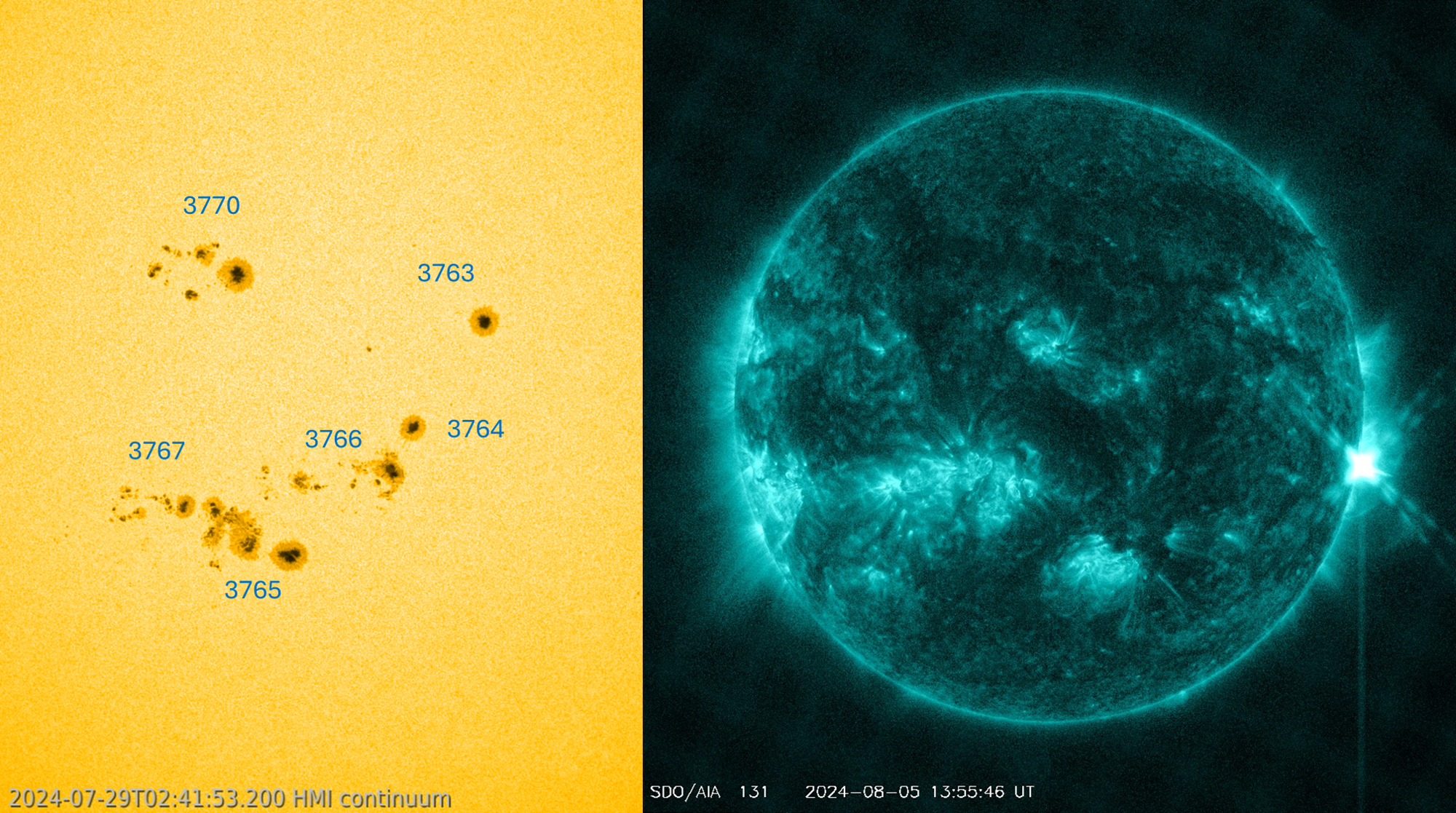An X1.7 flare was observed peaking at 13:40UTC on 5 August (GOES ; chart). Extreme ultraviolet (EUV) images by SDO indicate that the source was just behind the southwest limb from an active region in the sunspot group cluster that transited the solar disk over the last 2 weeks, most likely from NOAA 3767 or from its border with neighboring NOAA 3765. This group of sunspot regions was responsible for many M-class flares and 1 X-class flare (see this STCE newsitem). See the annotated white light image with NOAA active region numbers underneath on the left (from 29 July), and the EUV image of the X1.7 flare of today on the right.

The Humain Radioastronomy Station recorded a Type II radio burst (see the radiospectrogram underneath), and additional EUV images also suggest that the flare may be associated with a coronal mass ejection (CME). This CME has most likely no earth-directed component, but standing-by further analysis by the SIDC forecaster. The 10 MeV proton flux seems currently (15:25UTC) to gradually increase (GOES), but still below the event threshold of 10 MeV. COMESEP has issued an alert for a medium chance on a proton event. Further M- and X-class flares from this active region cluster is becoming less likely as it rotates further onto the Sun's farside during the coming days.

Space weather effects from the x-ray flares were limited to some minor disturbances of HF Com on the Earth's dayside, so mainly over the Atlantic Ocean, Europe and Africa, and the eastern portion of Canada/USA and South-America (DRAP ; map underneath). An advisory to the civil aviation for disturbed HF Com (High Frequency Communications) from the solar flare has been sent by PECASUS. Some magnetic observatories (Intermagnet (BGS)) reported a solar flare effect (SFE), i.e. one or more components of the magnetic field strength showing a spike around the time of the flare's peak due to ionospheric enhancement by the flare's x-ray and (E)UV radiation (also known as a "magnetic crochet"). The strength of the SFE varied between a few to around 10 nT. For comparison, the strongest flare so far this solar cycle (X8.7 on 14 May 2024) generated an SFE of 20-30 nT.

UPDATES
Update 5 August at 15:45UTC - The Sun produced another X-class flare less than 2 hours after the X1.7 flare. This X1.1 event (chart), peaking at 15:27UTC, was produced by NOAA 3780, an active region containing a huge main spot not far from the southeast solar limb. Analysis by the SIDC forecaster is in progress. The GOES/SUVI EUV image underneath shows the X1.1 flare left on the solar image, and the post-flare coronal loops associated with the X1.7 flare at the right limb of the solar image. Humain radio observations indicate this flare was "louder" at the observed radio frequencies than the radio emission associated with the X1.7 flare, with Owens Valley (OVSA) showing an impressive radio disturbance (chart).
